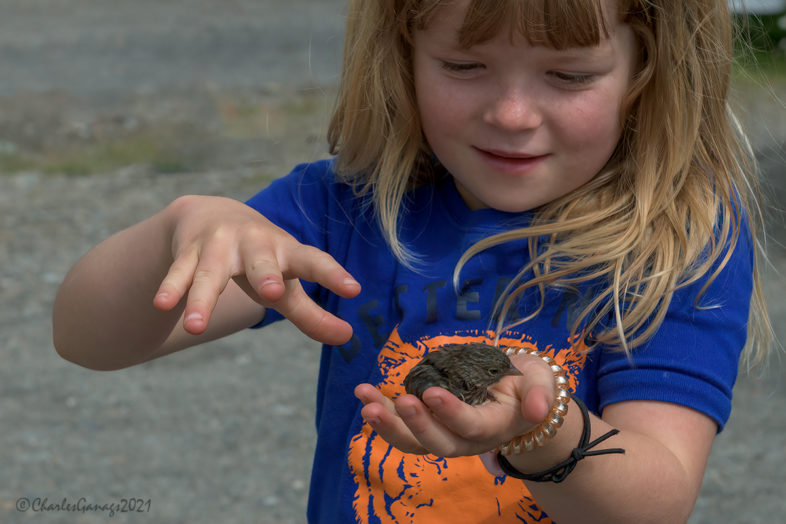
A fledgling Slate-colored Junco creates a memorable moment for 7-year old Beatrice Johnson. © Chuck Gangas
With Chris Rimmer on vacation celebrating the marriage of his daughter, the VCE banding team carried on in his absence, with somewhat disappointing results. Our two-day capture total of just 19 birds was, by far, the lowest tally of the season. In light of this paltry capture rate, a total of 12 different species (including a couple ‘first-of-the-years’) reinforced the trip’s mantra of “quality over quantity.” Also on the positive side, we deployed another GPS tag on a Bicknell’s Thrush, increasing the number of females carrying these tiny backpack trackers.
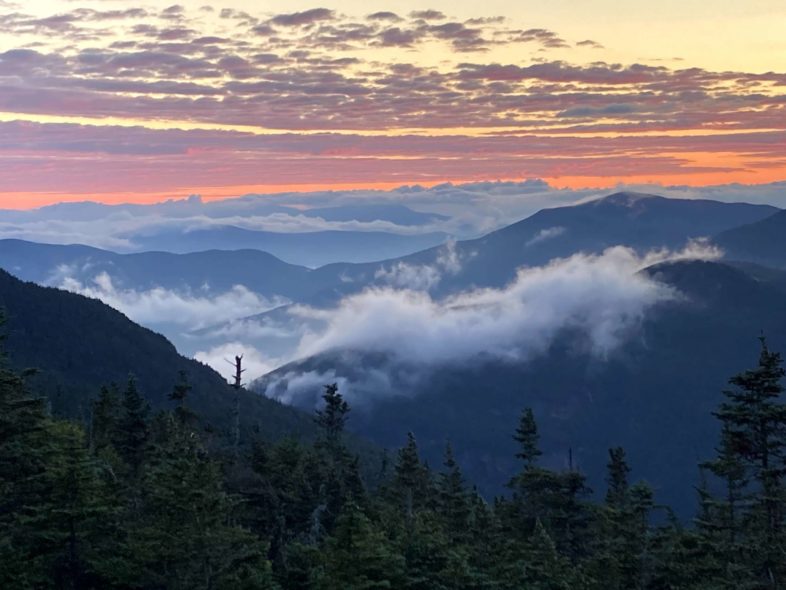
After the previous evening’s rain and low number of birds, a spectacular sunrise brightened our spirits. © Steve Faccio
We arrived on the Mansfield ridgeline Tuesday afternoon and began setting up the usual array of mist nets in a steady but diminishing rain. By 6:30pm the rain had ended, the air was noticeably drier and cooler, and the nets were promptly opened. Shortly thereafter, our first net check resulted in the capture of an unbanded adult female Bicknell’s Thrush, which was outfitted with a tiny GPS tag—the 34th deployed this year. However, after that auspicious start, the evening concluded with just eight birds banded. Fittingly, our attempts to capture a Northern Saw-whet Owl by leaving a few nets open for an hour after dark proved unsuccessful.
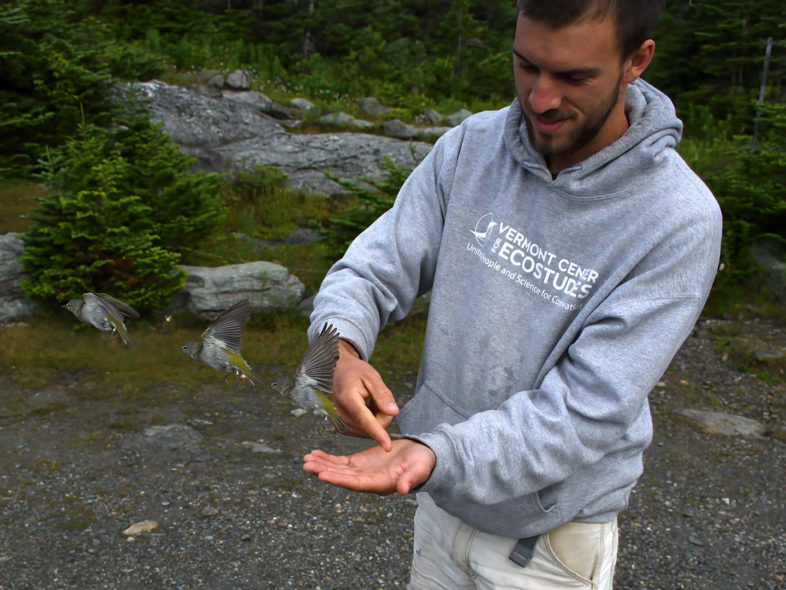
In a meticulously created composite image, Spencer Hardy releases a Tennessee Warbler. © Michael Sargent
The following morning, a few team members crawled out of their vehicles at 3:00am to try (again unsuccessfully) for Saw-whet Owls, while the rest of us slept-in until 4:00. With our 27 nets opened by 4:30, we brewed a quick pot of coffee as the morning dawned cool, clear, and calm. We were treated to a spectacular sunrise and undercast, as fog filled the valleys below and brushed the ridgelines like wisps of smoke. Despite the nearly complete lack of birdsong and disappointing tally of birds the previous evening, we were optimistic for a busy morning. Our optimism began to wane, however, as the nets remained empty for the next two hours.
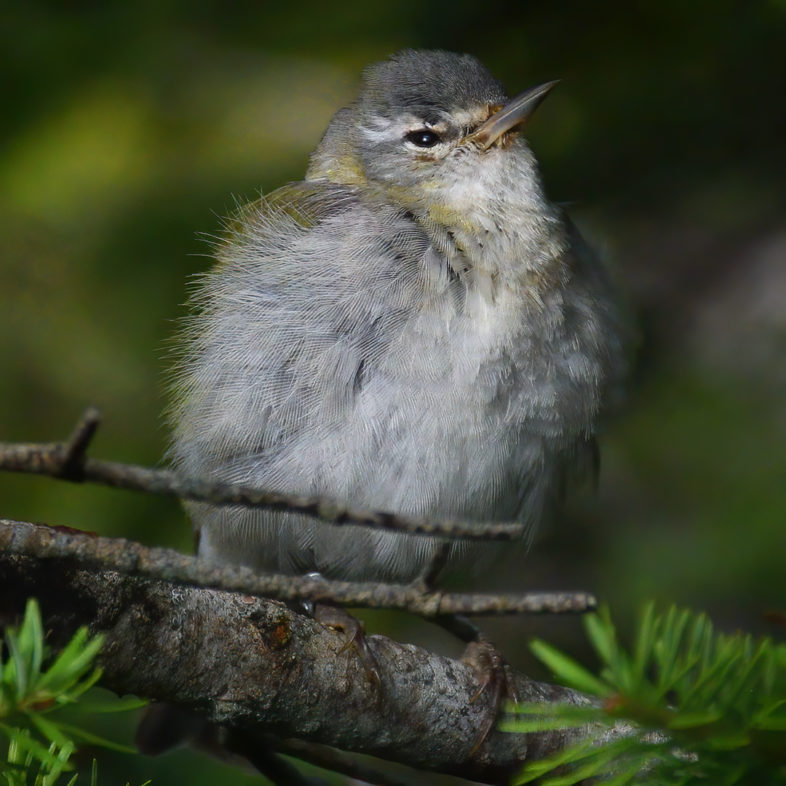
An adult Tennessee Warbler pauses momentarily on a fir branch after being banded. © Michael Sargent
Our first bird of the day was a female Blackpoll Warbler, which, along with a Black-and-white Warbler, were the only two birds captured all morning in the 12 nets deployed along the Amherst Trail, which snakes along the east side of the summit ridge. Fortunately, the nets on the west side of the ridgeline were more successful, producing the highlight of the day for us banders—two Tennessee Warblers (our first and second of the year). A boreal specialist, Tennessee Warbler is at the southern limit of its breeding range in Vermont, where it is considered a rare and sporadic breeder whose occurrence parallels spruce budworm infestations.
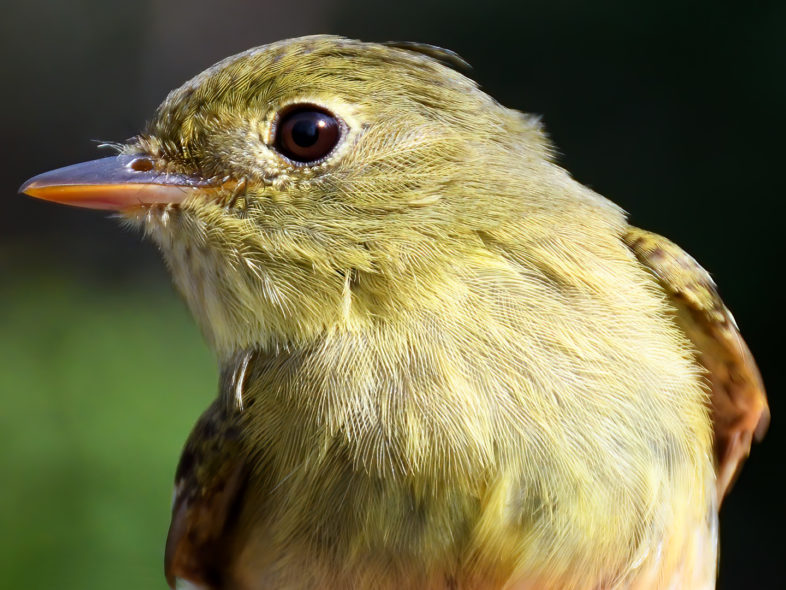
In this Yellow-bellied Flycatcher portrait, notice the rictal bristles around the base of the beak. These modified proto-feathers were once thought to act as an ‘bug net’ making it easier to catch insect prey in flight. Although the precise function is still unknown, the latest consensus is that, like mammalian whiskers, they provide a sensory function, probably helping the bird gauge its speed and orientation in flight. © Michael Sargent
Other highlights during a very slow banding day included a recaptured male Sharp-shinned Hawk that we originally banded two weeks prior, a Downy Woodpecker (the first for 2021), a Yellow-bellied Flycatcher, and a juvenile Bicknell’s Thrush.
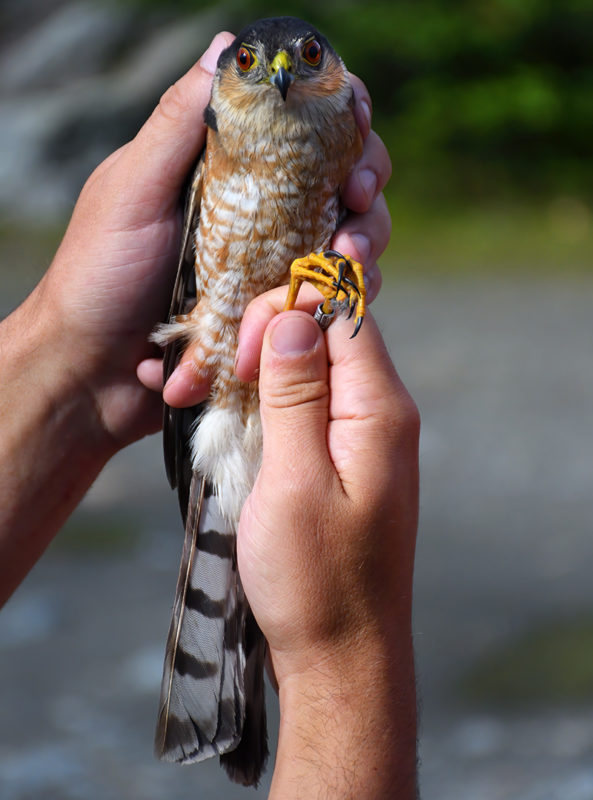
Always a crowd-pleaser, we first banded this adult male Sharp-shinned Hawk on July 14, 2021. © Michael Sargent
By morning’s end we had processed just 11 birds, for a capture rate of 0.068 birds/net-hour, quite possibly a record low for this site. Perhaps the birds were off celebrating with Chris!
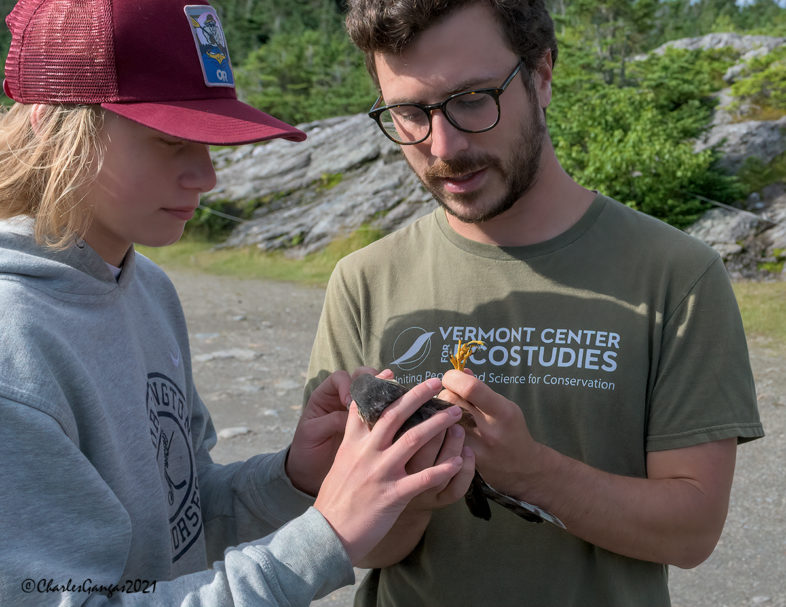
Nathaniel Sharp passes a Sharp-shinned Hawk to aspiring birder Jay Heiny-Robby for release. © Chuck Gangas
Our final total of 19 captures included:
Sharp-shinned Hawk — 1 within-season recapture of a 2+ year-old male
Downy Woodpecker — 1 free-flying juvenile female
Yellow-bellied Flycatcher — 1 new adult of unknown sex
Golden-crowned Kinglet — 3 new free-flying juveniles
Winter Wren — 1 new free-flying juvenile
Bicknell’s Thrush — 2 (1 new 2+ year-old female; 1 new free-flying juvenile)
Swainson’s Thrush — 1 new free-flying juvenile
Dark-eyed Junco (Slate-colored) — 3 (2 free-flying juveniles, 1 recaptured adult of unknown sex)
White-throated Sparrow —1 recaptured adult of unknown sex
Blackpoll Warbler — 2 (1 new free-flying juvenile, 1 recaptured 2+ year-old female)
Black-and-white Warbler — 1 new free-flying juvenile male
Tennessee Warbler — 2 (1 new adult male, 1 new adult of unknown sex)
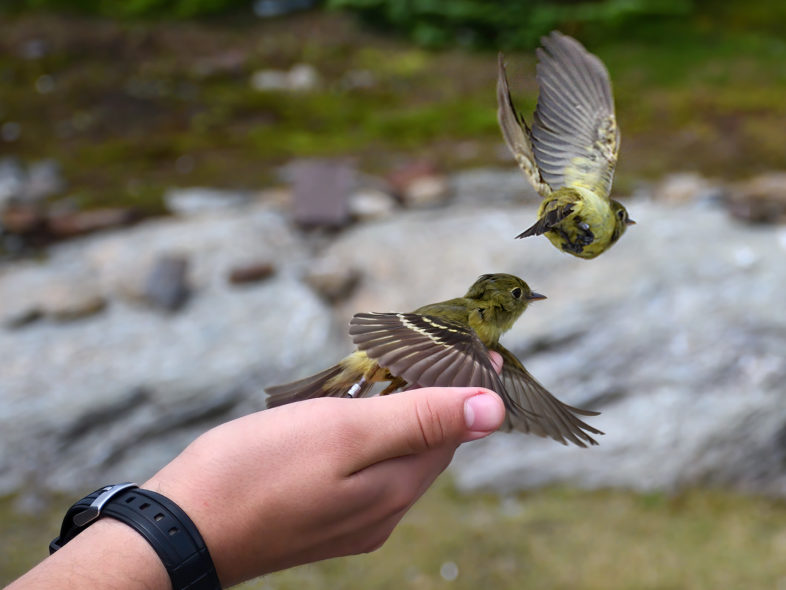
In this composite image, Avery Fish releases a Yellow-bellied Flycatcher. © Michael Sargent

Perhaps fewer captures but you have used photography to brilliant effect in this report…a teaching tool re ‘whiskers’, flight postures, and as always sheer beauty, thank you, Veer Frost